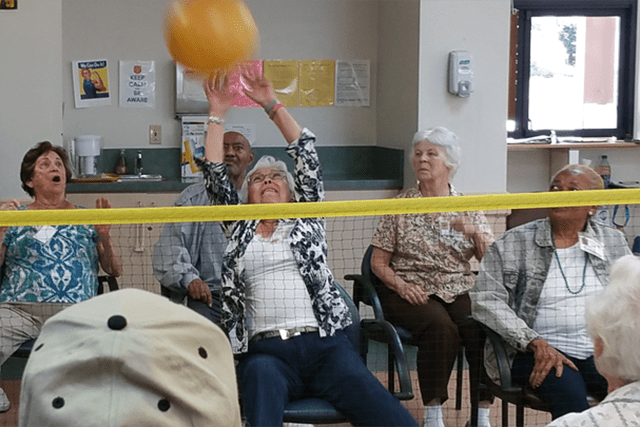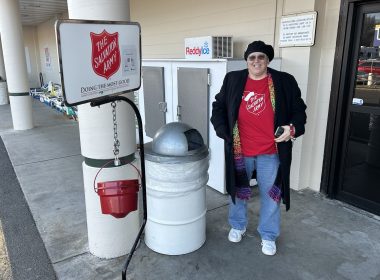Salvation Army program provides elderly caregivers some much-needed support.
By Kristin Margeruite Doidge –
The cost of caring for a loved one suffering from memory loss can often feel unbearable.
According to the Alzheimer’s Association, Alzheimer’s—a wretched and fatal form of dementia that erases memories and ultimately can destroy mental and physical capacity—along with other dementias will cost the country $259 billion in health and care costs this year, with more than two-thirds of the support coming from Medicare and Medicaid.
Of course, the unbearable part is, for the most part, not financial; it’s the toll caregiving takes on their bodies physically, spiritually and emotionally. And it’s becoming a reality more of us must face every day.
Earlier this year, the Centers for Disease Control (CDC) released new data that reveals death rates from Alzheimer’s climbed 55 percent from 1999 to 2014, and the number of Americans afflicted is likely to rise rapidly in the coming years. While there’s no consensus on preventative measures, one thing virtually all researchers agree on is that more can be done to support caregivers.
“Providing care for a family member in need is an act of kindness, love and loyalty,” said Sherrie Similton, Director at The Salvation Army’s Sage House in San Pedro, California. “These are virtues that The Salvation Army and Sage House value and uphold daily.”
Sage House is a licensed adult day care facility designed to serve the needs of older adults who can benefit from supervised hours of care outside the home in a safe, stimulating, and loving atmosphere. Many of the seniors served there have Alzheimer’s or other debilitating conditions. Sage House’s dedicated staff of six provides recreational activities for about 30 members, including memory enhancement games, arts and crafts, yoga, drama, karaoke and therapeutic exercise.
It’s a resource that’s become particularly valued by Lisa since her mother, Rita Ryle, was diagnosed with Alzheimer’s six years ago. Ryle moved in with her daughter, and Lisa left her job at the bank to care for her full-time—an adjustment for them both.
“My mom has always been very independent, so she didn’t want to go at first,” Lisa said. “But the staff at Sage House makes them all feel really welcomed. When they come in, they get hugs, and I feel that interaction with the folks that go there is important.”
Sage House provides caregivers, like Lisa, with a brief respite and relief from the stress of full-time caregiving through its specialized programming, which allows her to drop her mom by for quality care a few days a week from 11 a.m. to 3 p.m. The center also provides information and support. Through a partnership with Alzheimer’s Greater Los Angeles, monthly training sessions are provided for Sage House members’ caregivers and for anyone in the community free of charge.
“Some things you might already know—but we’ll talk about different things each time,” Lisa said. “We talk about how we care for our people at home—and make suggestions.”

As for her mom’s time at Sage House, Lisa and other caregivers can rest assured knowing it’s well spent. While Alzheimer’s cannot be prevented by memory care programming, the goal is to stall its progression. Getting out of the house helps with depression and loneliness in general, and some of the activities are designed to help members relive their youth, such as dancing and karaoke. There are also opportunities to interact with service animals, arts and crafts, and short field trips.
“Members socialize and enjoy working with each other through educational classes, and kindle friendships over lunch,” Similton said. “This helps them keep active, happy, and connected.”
Since Sage House receives no revenue from federal, state, and local governments, funding is provided by “member fees, foundations, churches, memorials, service organizations, and individuals who want to support this special program for senior citizens,” said Captain Aurelio Ambriz, San Pedro Corps Officer.
Members and their families also take an interactive role in supporting the facility through donations and Bingo game prizes, such as quilts and other handmade items, and by organizing Alzheimer’s walks through the Alzheimer’s Greater Los Angeles partnership.
Still, Lisa said it would be especially useful to see more connection between member caregivers and families online, perhaps on Facebook in a closed group, or through online webinars so that more caregivers could join and gain information that’s often only covered in person. She also suggested organizing more fundraising efforts that might involve painting and craft-making with caregivers and members together.
It’s that connection to the past and to the present between family and friends, that seems to build on the memories and work of our own lives—and good deeds for others into the future.
“From my personal experience, when my mom became forgetful, all of her friends melted away,” Lisa said. “We want this program to go on. This is a place we want to support no matter what.”












